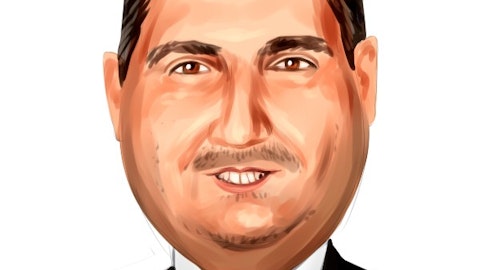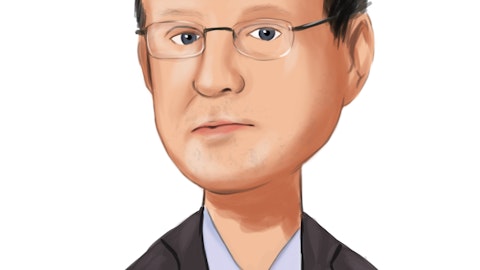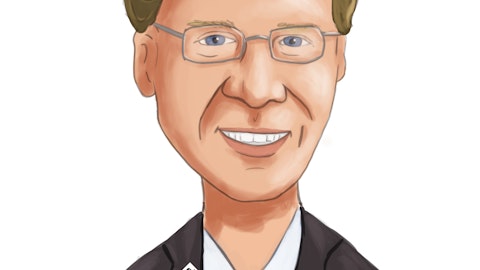Casey Whitman: Okay, got it. Thank you. Helpful. And I guess, Palmer just bigger-picture question, just with your comments around the loan growth outlook, I mean, which I appreciate mid-single-digits is still really good for you guys. But I guess, what would you — what do you think would need to change or will need to happen before we kind of that need to turn up the growth engine, I assume that, that’s going to be largely dependent just on the general economy, but what do we need to see there?
Palmer Proctor: Well, a lot of our pullback obviously was on the CRE front, too. And capital has certainly helped us improve there in terms of our ratios. But I would tell you, as we start seeing things improve and obviously, the consumer data came out this morning, which looked right on target in terms of estimates. And if things start to improve there in terms of the outlook and the optimism and we feel it and see it in the markets. I will tell you the demand is still there. And that’s — the beauty of our footprint is that if and when we’re ready, the opportunities are there. We’re not going to have to be scrambling around to try and find those opportunities. They already exist. So, we have put a governor on this that’s been self-induced, not by a lack of demand in the markets we’re in, and we’re fortunate to be able to say that.
So, right now, I would tell you, is more of a time for in my opinion, for people in the industry to probably continue to be a little more selective which we’ll continue to do, and we continue to take good care of our existing customers. And obviously, any new relationship — I mean, any new opportunities they have, we will certainly entertain. But we remain very discerning and selective in the new business front. So, until we start seeing other improving metrics in CRE and in the economy overall, we’ll kind of stay where we are.
Casey Whitman: Makes sense. Thank you.
Palmer Proctor: Thank you.
Operator: The next question will come from Christopher Marinac with Janney. Please go ahead.
Christopher Marinac: Hey thanks. Good morning. Palmer, it’s been two years since Balboa came on with the company. And I guess I just want to do a look back in terms of how you are adjusting the credit type that you’re bringing in from that division? And then also the charge-off outlook either from Jon or Doug for what we should expect this year?
Palmer Proctor: Yes, I’ll touch on the strategy there and then Jon can chime in on the specifics on the charge-offs. I would tell you that line of business has been a great line of business for us. Obviously, it’s a cyclical business in terms of the economy and these are small business operators. So, when the small business is under stress, we’re certainly going to feel it. And more specifically, as we’ve talked about for us and many others that trucking industry has really been kind of the hot point. So, we have pulled back on that. And I think the important thing to understand there is that the credit box, obviously, there and the appetite for anything related to the trucking industry does not exist. So, we’ll have to work that through the system.
And now all of those loans are obviously not troubled loans, but some of them are, and they’re feeling the stress from the economy like a lot of other small businesses are. But in terms of our — being glad we have the business we are, I think it adds additional diversification. And as the market improves, I think that line of business will continue to deliver. The charge-offs are higher than we would like them, but we’ve done an excellent job of being able to reserve for any potential losses there, as you can see. And it still remains a small part of our balance sheet. And as we’ve said from the inception, it’s got a cap in terms of what percentage it would become of the balance sheet, which is 10%. I would tell you right now, it’s kept pretty much right where it is until we start seeing some improvement in the overall economy.
So, that’s kind of the overall. And Jon, you can kind of talk to the specifics in terms of the net charge-offs, if you like.
Jon Edwards: Chris, Palmer did a great job of overviewing that and I agree,100% with everything. The charge-offs just as a context. Remember, the charge-offs in 2022 were only $8 million. And so clearly, what he said about trucking, and we took a little market share in 2022 and that’s what we really dealt with in 2023. But we did tighten the box as we saw what was necessary. We tightened it a little more and we’re just continuing to tweak as we need to make sure that we’re getting the credit in there that we really want. And to his point, it’s — we’re seeing good trendlines in terms of past dues and things of that nature that would make us believe that — I don’t know if you want to call it egg through the snake is coming to the end, and I don’t anticipate that this year we’ll have the same level of charge-offs as last, certainly.
Christopher Marinac: Great. Thank you, both. That’s very helpful. And then just a quick one for Nicole. Are you seeing any deposit rate exceptions? Or have those slowed down in the last quarter or so?
Nicole Stokes: We have definitely seen some deposit rate exception slowing, and we have also seen competitive pressure starts to slow, specifically where we had seen some very heavy pressure in Florida from credit unions, we have started to see that slow, which is good.
Christopher Marinac: Great. Thank you for taking my questions.
Operator: The next question will come from David Feaster with Raymond James. Please go ahead.
David Feaster: Hey, good morning everybody.
Nicole Stokes: Good morning David.





